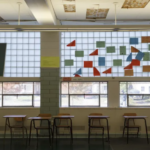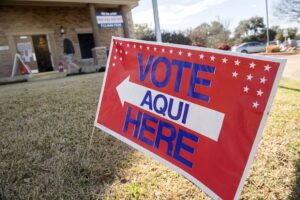By Johnny Kampis | The Center Square
As the COVID-19 pandemic continues to rage across the U.S., many parents are faced with the difficult choice of whether to send their children to school or have them learn virtually from home. Some schools will begin the school year virtual-only, forcing children to complete their studies from their kitchen tables.
But a lack of high-speed – or any – internet may impede that ability. Politico reported in March that more than 20 percent of students whose schools closed in the spring lacked home broadband access, with many parents heading to the parking lots of libraries and businesses to get an internet connection for their children’s education.
The spring saw movement on the federal level to ease red tape to better enable education at home, which should continue into this fall so that some students aren’t left behind.
For example, the Federal Communications Commission waived rules in its Rural Health Care and E-Rate programs until Sept. 20. The rules, created to help curb waste, fraud or abuse, forbid hospitals, schools and libraries that get federal subsidies from accepting or seeking anything of value from an internet service provider that participates in those programs.
CNET noted that after the regulations were relaxed, service providers could donate equipment such as Wi-Fi hotspots that libraries and schools could distribute to students without broadband.
The FCC could – and should – extend that waiver past the initial end date so that students can continue to receive those services through the fall, as it’s unclear when schools will be able to fully reopen.
The FCC also has allowed wireless carriers to tap into additional broadband temporarily to support increased usage. Existing license holders shared unused spectrum in an initiative created in conjunction with the FCC’s Wireless Telecommunications Bureau.
T-Mobile tapped into the 600 MHz band in March. On a more local level, Harlan 2-Way, Inc. gained access to spectrum in the 2.5 GHz band in June to improve access in low-income Harlan County, Kentucky.
FCC Chairman Ajit Pai said keeping rural communities connected to the internet is the commission’s “top priority” this year.
“During this pandemic, broadband connectivity has become even more important as so many stay at and work from home,” he said.
But more can be done. While the left-leaning Brookings Institute has espoused a plan that would put more taxpayer money into broadband via federal subsidies, the organization has also pitched ideas that would better enable home internet for disadvantaged students without additional funds.
That includes the modernization of the E-Rate program to allow some of the money to go directly to students.
“The FCC argues that its statutory authority is limited to schools and libraries, but Congress can immediately change the restrictive language and redirect some of the unused support to home broadband access,” Brookings notes.
FCC Commissioner Brendan Carr said that measures pushed by Pai since he was appointed to the chairman’s role by President Donald Trump, which include freeing up spectrum and relaxing regulations on service providers, have helped the digital divide shrink by 30 percent in the U.S.
That digital divide still exists for many Americans, however, which is why federal regulators and lawmakers must continue to seek ways to cut red tape and leverage existing resources to close that gap.
This story was originally published by The Center Square.











More Stories
More West Virginia schools will participate in opioid abuse prevention program
Pennsylvania is increasingly underfunding special education, report finds
Memphis’ Kingsbury High School community steps up call for changes